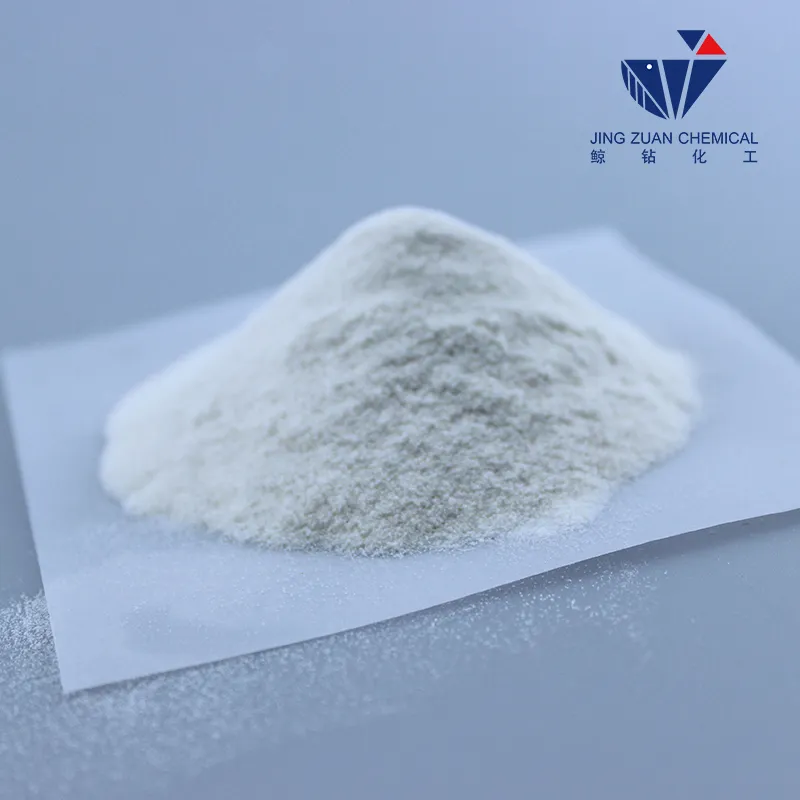
Dec . 23, 2024 22:33 Back to list
Exploring the Applications and Benefits of Hydroxypropyl Methylcellulose in Various Industries
The Use of Hydroxypropyl Methylcellulose An Overview
Hydroxypropyl Methylcellulose (HPMC) is a versatile semi-synthetic polymer derived from cellulose, which is a natural polymer. Widely recognized in various industries, HPMC is primarily used as a thickening agent, emulsifier, and film-forming agent. Its unique properties, including its hydrophilic nature, thermal stability, and excellent solubility in water, contribute to its extensive applications across different fields, including food, pharmaceuticals, cosmetics, and construction.
Applications in the Food Industry
In the food industry, HPMC is predominantly used as a food additive. Its ability to retain moisture makes it ideal for use in baked goods, sauces, and dressings, where it enhances texture and mouthfeel. HPMC also serves as a stabilizer and thickener, preventing the separation of ingredients in emulsified products. Moreover, as a low-calorie thickener, it is suitable for low-fat and reduced-calorie formulations. This makes it a favorable choice for health-conscious consumers who are looking to enjoy flavorful food without excessive calories.
Additionally, HPMC is used as a vegan substitution for gelatine in various products, allowing for the creation of plant-based alternatives to traditional desserts and gummy candies. Its gelling properties are particularly valued in the production of gluten-free baked goods, where it helps improve dough structure and overall consistency.
Pharmaceutical Applications
In the pharmaceutical sector, HPMC is a crucial component of many drug formulations. Its properties as a binder and coating agent improve the performance and stability of oral drugs. HPMC is commonly used in the production of tablets and capsules, where it helps in controlling the release of active ingredients, providing a sustained release effect. This feature is particularly beneficial in developing prolonged-release formulations, reducing the frequency of dosing and improving patient compliance.
Furthermore, HPMC is often found in topical formulations, where it acts as a film-forming agent, providing a protective barrier on the skin. Its stability and non-toxic nature ensure that it is safe for use in various medicinal applications. HPMC is also used in eye drops and other ophthalmic solutions, where it helps maintain moisture, providing relief for dry eyes.
use of hydroxypropyl methylcellulose

Cosmetic and Personal Care Use
In the realm of cosmetics and personal care products, HPMC is widely employed due to its excellent film-forming properties and ability to enhance texture. It is a common ingredient in products such as lotions, creams, and gels, where it functions as a thickener and stabilizer. The use of HPMC in skin care products helps improve the application experience, providing a smooth and desirable feel upon application.
Moreover, HPMC plays a significant role in hair care products, where it serves to improve the viscosity and stability of shampoos, conditioners, and styling gels. Its ability to provide hold without stiffness makes it a preferred ingredient in many modern formulations.
Construction Applications
The construction industry has also embraced HPMC for its advantageous properties. It is frequently used as an additive in cement, mortar, and plaster formulations. HPMC enhances the workability and adhesion of these mixtures, allowing for improved performance during application. Its water-retaining properties help prevent the premature drying of mortars and plasters, ensuring better curing and strength development. As construction practices increasingly focus on efficiency and sustainability, the incorporation of HPMC presents an effective solution for enhancing material performance.
Conclusion
Hydroxypropyl Methylcellulose is a remarkable compound with a wide range of applications across various industries. Its multifunctional properties as a thickening agent, binder, emulsifier, and film former contribute to improvements in product performance, texture, and stability. As industries continue to innovate and evolve, the demand for versatile ingredients like HPMC is likely to grow, underscoring its importance in both existing and emerging applications. Whether in food, pharmaceuticals, cosmetics, or construction, HPMC remains a vital component driving enhanced quality and functionality.
-
Versatile Hpmc Uses in Different Industries
NewsJun.19,2025
-
Redispersible Powder's Role in Enhancing Durability of Construction Products
NewsJun.19,2025
-
Hydroxyethyl Cellulose Applications Driving Green Industrial Processes
NewsJun.19,2025
-
Exploring Different Redispersible Polymer Powder
NewsJun.19,2025
-
Choosing the Right Mortar Bonding Agent
NewsJun.19,2025
-
Applications and Significance of China Hpmc in Modern Industries
NewsJun.19,2025







